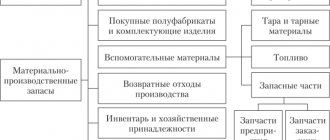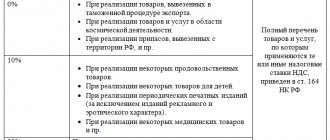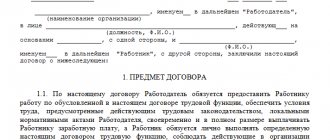The provision of information to the Federal Tax Service must be carried out in strict accordance with unified forms and forms. For reporting on excisable goods, officials developed and approved special forms.
Let us remind you that all excise duty taxpayers are required to submit three types of tax reporting:
- For alcoholic products.
- For gasoline and other types of fuel.
- For tobacco products.
We will tell you about the forms and deadlines for submitting excise tax returns in 2020.
Payers of this tax obligation are recognized not only as organizations, but also as individual entrepreneurs, as well as persons transporting excisable products across the customs border of the Eurasian Union. Key definitions and rules for applying taxation are enshrined in Chapter 22 of the Tax Code of the Russian Federation.
Why report excise taxes?
Excise taxes were developed as a taxation tool. All producers of consumer goods are required to pay this internal indirect tax. The calculated excise tax is included in the final cost of the product. Excise goods include:
- alcohol;
- tobacco products;
- petrol;
- some imported goods.
Manufacturers are required not only to calculate and pay the excise tax, but also to report on the state of mutual settlements with the budget. Tax reporting on excise duties is submitted to the Federal Tax Inspectorate at the place of registration of the manufacturer. If excisable goods are produced and sold by an individual entrepreneur, he must submit the register to the Federal Tax Service at his place of residence.
The excise declaration is submitted monthly, but only in case of sale of manufactured products. If an enterprise manufactured but did not sell an excisable product, there is no need to submit a report.
What types of declarations are there?
Excise tax is not a single form of reporting. Various forms are used to provide information about different types of reporting products. In 2020, tax forms and rules for filling them out have been updated. Here are the types of excise tax declarations submitted to the Federal Tax Service in 2020:
| Name | Order | KND form number | When is the form submitted? | Download |
| Tax return on excise taxes on tobacco products | Order of the Federal Tax Service of Russia dated 02/15/2018 No. ММВ-7-3/ [email protected] (Appendix 1 to the Order) | 1151074 | From August 2021 | |
| Declaration on indirect taxes when importing goods from the territory of the EAEU countries | Order of the Ministry of Finance of Russia dated September 27, 2017 No. SA-7-3/ [email protected] | 1151088 | From December 2021 | |
| Declaration of excise taxes on fuel | Order of the Federal Tax Service of Russia dated January 12, 2016 No. ММВ-7-3/ [email protected] (Appendix No. 4 to the Order) | 1151089 | From August 2021 | |
| Declaration of excise taxes on alcohol | Order of the Federal Tax Service of Russia dated September 21, 2018 No. ММВ-7-3/ [email protected] (Appendix No. 1 to the Order) | 1151090 | From March 2021 (from March report) |
Who delivers and when?
The reporting persons are those who file the excise tax return. These include organizations and individual entrepreneurs paying excise taxes (Article 179 of the Tax Code of the Russian Federation). Those enterprises that transport products across the borders of the EAEU must also report.
Reports are submitted to the Federal Tax Service inspection at the location. If there are separate divisions, reporting is sent to the Federal Tax Service at the location of this division. The deadline for submitting an excise tax return is limited; documents must be submitted by the 25th of the next month. But only those organizations that actually pay excise tax to the budget after selling excisable products report monthly.
The delivery format is paper (if the number of employees allows) and electronic (for those who employ more than 100 people). The indirect tax return must be submitted by the 20th of the following month.
Accrued excise taxes are paid on the same dates - no later than the 25th of the next month. The reporting person is advised to file the return and make payments at the same time to avoid warnings and subsequent penalties.
How to fill out a declaration for alcohol
There is no uniform procedure for filling out the 2020 alcohol excise tax declaration; it all depends on the type of alcoholic product. There are general rules for filling out the title page and the summary section for excise taxes. All other sections are filled out solely according to the type of product being reported.
Let's give an example. “Ideal Producer” is a brewing company. She needs to submit an excise tax report on beer produced in June 2021. The deadline for submitting reports for June 2021 is 07/25/2019. The manager decided to report in advance.
Ideal Supplier produced and sold 200,000 cans in June 2021. The volume of each jar is 0.5 liters. The total volume produced is 100,000 liters (200,000 × 0.5). Ethyl alcohol content - 7%.
The excise tax rate for beer products with an alcohol content from 0.5% to 8.6% in 2021 is 21 rubles/liter.
The total amount of excise taxes payable to the budget: 100,000.00 × 21 = 2,100,000.00 rubles. Now you need to report the amount of excise taxes to the territorial Federal Tax Service. Here's how to correctly fill out the alcohol excise tax return for beer drinks:
- Start generating a report from the title page.
- Fill out all sections and applications that correspond to the actual data of the accountable person.
- Enter a separate indicator on a separate line. If an organization has several types of excise goods, then each is assigned a separate line. Excise products are not subject to summation.
- Number all pages in order.
- Avoid corrections. The Federal Tax Service will not accept forms crossed out or corrected with a special liquid.
Now let's move on to filling out sections of the alcohol declaration.
Rates for excisable goods 2018
| № | Type of excisable goods | Excise tax for the first half of 2021 | Excise tax for the second half of 2021 |
| ETHANOL | |||
| 1 | Various types and forms of ethyl alcohol, food and non-food | 107 rub. for 1 l | 107 rub. for 1 l |
| 2 | Products containing alcohol (except perfumes and aerosols) | 418 rub. for 1 l | 418 rub. for 1 l |
| ALCOHOL | |||
| 3 | Alcoholic products with an alcohol content of more than 9% | 523 rub. for 1 liter of alcohol in the product | 523 rub. for 1 liter of alcohol in the product |
| 4 | Low alcohol products (up to 9% strength) | 418 rub. for 1 liter of alcohol in the product | 418 rub. for 1 liter of alcohol in the product |
| 5 | Wines (grape and fruit) | 18 rub. for 1 l | 18 rub. for 1 l |
| 6 | Wines for which protected geographical indication applies | 5 rub. for 1 l | 5 rub. for 1 l |
| 7 | Sparkling wines, champagne | 36 rub. for 1 l | 36 rub. for 1 l |
| 8 | Sparkling wines with protected designation of origin | 14 rub. for 1 l | 14 rub. for 1 l |
| 9. | Beer with strength up to 8.6% and drinks based on it, cider and poire (strength up to 6%), mead (strength up to 6%, at least 8% honey in the composition) | 21 rub. for 1 l | 21 rub. for 1 l |
| 10 | Strong beer (over 8.6% strength) and drinks based on it | 39 rub. for 1 l | 39 rub. for 1 l |
| TOBACCO PRODUCTS | |||
| 11 | All types of tobacco (except raw materials for tobacco products) | 2772 rub. for 1 kg | 2772 rub. for 1 kg |
| 12 | Cigars | 188 rub. for 1 piece | 188 rub. for 1 piece |
| 13 | Cigarillos | 2671 rub. for 1000 pcs. | 2671 rub. for 1000 pcs. |
| 14 | Cigarettes and cigarettes | 1562 rub. for 1000 pcs. + 14.5% of the maximum retail price (not less than 2123 rubles per 1000 pcs.) | 1562 rub. for 1000 pcs. + 14.5% of the maximum retail price (not less than 2123 rubles per 1000 pcs.) |
| 15 | E-Sigs | 44 rub. for 1 piece | 44 rub. for 1 piece |
| 16 | Liquids for electronic cigarettes | 11 rub. for 1 ml | 11 rub. for 1 ml |
| AUTO AND MOTO | |||
| 17 | Passenger cars (power from 90 to 150 horsepower) | 45 rub. for every horsepower | 45 rub. for every horsepower |
| 18 | Cars and motorcycles with a power of 150 hp. With. | 437 rub. for every horsepower | 437 rub. for every horsepower |
| 19 | Cars with a power of 200-300 hp. With. | 714 rub. for every horsepower | 714 rub. for every horsepower |
| 20 | Cars with a power of 300-400 hp. With. | 1218 rub. for every horsepower | 1218 rub. for every horsepower |
| 21 | Cars with a power of 400-500 hp. With. | 1260 rub. for every horsepower | 1260 rub. for every horsepower |
| 22 | Cars with power over 500 hp. With. | 1302 rub. for every horsepower | 1302 rub. for every horsepower |
| PETROLEUM PRODUCTS | |||
| 23 | Class 5 gasoline | RUB 11,213 for 1 t | RUB 11,213 for 1 t |
| 24 | Gasoline not corresponding to class 5, straight-run gasoline | 13,100 rub. for 1 t | 13,100 rub. for 1 t |
| 25 | Diesel fuel | 7655 rub. for 1 t | 7655 rub. for 1 t |
| 26 | Motor oils | 5400 rub. for 1 t | 5400 rub. for 1 t |
| 27 | Benzene, paraxylene, orthoxylene, aviation kerosene | 2800 rub. for 1 t | 2800 rub. for 1 t |
| 28 | Middle distillates | 8662 rub. for 1 t | 8662 rub. for 1 t |
Step-by-step instructions for filling out the form
Step 1. Filling out the title page does not cause any special problems - on this page you indicate the full name of the accountable person, INN and KPP (which are automatically duplicated for the entire report). Next comes line-by-line filling.
| Cover Sheet Cell | Filling procedure |
| Correction number | If the declaration is initial, then the value 0 is entered. If an adjustment is provided, then its number is indicated in order (01, 02, etc.). |
| Taxable period | In an alcohol return, the tax period is a month. The serial number of the reporting month corresponds to the tax period. For our example, the reporting month is 06. |
| Reporting year | The year the report was submitted is indicated. In our case, this is 2020. |
| Tax authority code | Coding of the Federal Tax Service at the location of the taxpayer. |
| Location code | 213 - at the place of registration of the largest taxpayer. 214 - at the location of other Russian organizations. |
| Form and Taxpayer Identification Number (TIN) of the reorganized organization | Indicated only in case of reorganization of the reporting entity and submission of information by the successor. |
| Contacts | A telephone number for contacting the contractor is indicated. |
| Total number of pages | The total number of pages in the declaration is entered. |
| Taxpayer attribute | 1 - the taxpayer himself. 2 - his representative who acts by proxy. |
| FULL NAME. taxpayer representative | The surname, name and patronymic of the head of the organization, his representative or individual entrepreneur must be indicated in full. |
| date | Reporting day. |
Step 2. Go to section 1 “Amount of excise duty”.
| Line number | Filling procedure |
| 010 | Taxpayer OKTMO code. |
| 020 | Budget classification code according to which excise duty is paid. For beer products KBK - 182 1 0300 110. |
| 030 | Encoding of the payment deadline. In our case, the value should be set to 03 - for payments that are made before the 25th. |
| 040 | The calculated amount of excise duty. |
| 050 onwards | They are filled out in a similar way for each type of excise product separately. |
Step 3. Fill out section 2 “Calculation of the excise tax amount”.
| Line number | Filling procedure |
| 010 | Code of the type of excisable goods. For our example, the code is 320 (beer with an alcohol content from 0.5% to 8.6%). All codes are given in Appendix No. 2 to Order No. ММВ-7-3/ [email protected] , which approves the procedure for filling out the excise tax declaration on alcohol. |
| Section 2.1 “Operations performed with excisable goods on the territory of the Russian Federation” | |
| Box 1 | Indicator code. Sales of beer products in Russia are marked with code 10001. The general list of codes is presented in Appendix No. 3 to Order No. MMV-7-3 / [email protected] |
| Column 2 | Code for the application of the excise tax. For our example, this is 4. All codes are presented in Appendix No. 4 to the Order. |
| Column 3 | The base calculated by the taxpayer for the reporting period is entered. |
| Column 4 | Amount of contribution to the budget. |
| Section 2.2. “Operations for the sale of excise goods outside the Russian Federation” | The order of filling in the columns is similar. |
| Section 2.3. “Amount of excise tax (advance) subject to tax deduction” | The fields are filled in with the characteristics that allow you to receive a tax deduction. For our example, there is no possibility to issue a deduction. |
| Section 2.4 “Amount of excise tax payable to the budget” | |
| Box 1 | Operation codes:
|
| Column 2 | The total amount, which must match line 040 of section 1. |
| Section 2.4.1 “Advance amount subject to payment to the budget or offset” | Similar data for advance payments. |
| Section 2.5 “Documented fact of sale of excisable goods outside the Russian Federation” | |
| Box 1 | Transaction codes from 50001 to 50011. You can view the identity of the codes in Appendix No. 3 to the Order. |
| Column 2 | Calculated tax base. |
| Column 3 | The calculated amount of the excise tax (the product of the base and the excise tax rate). |
| Columns 4 and 5 | Coding of the tax period of sale (month and year). |
Step 4. All attachments to the declaration are completed. If we are talking about the production and sale of beer products, then only Appendix No. 2 is filled out. In our example, the manufacturer does not sell goods abroad, so Appendix No. 2 is not compiled.
Here is a list of all attachments to the excise tax return for alcohol.
| Application number | Application Name |
| Appendix No. 1 | Calculation of the tax base by type of excisable goods. The calculation is made based on the volume produced for each product code separately. |
| Appendix No. 2 | Information on the sale of excisable goods outside the Russian Federation. Select the type of guarantee document - bank guarantee or surety agreement, fill in its details and the amount of the guarantee in rubles. Details are provided for each code of the product sold. |
| Appendix No. 3 | Information on the volumes of ethyl alcohol sold to the buyer. Decoding for each code of excisable products. |
| Appendix No. 4 | Information on the volumes of denatured ethyl alcohol received by the taxpayer. All delivery information is entered. |
| Appendix No. 5 | Information on the volumes of ethyl alcohol purchased and used in the tax period upon notification of payment of the excise advance. Detailed breakdown of all operations. |
| Appendix No. 6 | Information on the volumes of ethyl alcohol purchased and used in the tax period upon notification of exemption from excise advance payment. Detailed breakdown of all operations. |
IMPORTANT!
A separate declaration is submitted for each type of excisable product (alcohol, tobacco, gasoline). If a manufacturer sells beer and other alcoholic products, they are combined into one declaration for alcohol. In this case, a detailed breakdown of each alcohol code must be provided within the declaration itself.
What is excise tax
The state tax system is characterized by the presence of various types of taxation and methods of collecting a particular tax. Some are collected directly from payers, while others are collected indirectly by the state from the population.
Excise taxes belong specifically to the latter category, that is, they are a type of tax payment that the government officially imposes on the manufacturer of certain types of products, while allowing them to add it to the calculation of the cost of a unit of goods. In other words, it is the portion of the price that the consumer ultimately pays. An excise stamp sticker found in a store on a label or roof is precisely an indicator that this category of product is subject to this type of tax.
Excise taxes on certain groups of goods are an indirect tax levied on the population
It is important! State regulation in the tax administration of excise duty is also indirect - through the Tax Code it establishes only tax rates based on a number of criteria, and manufacturers independently calculate the final payment amount and account for excisable goods, including the introduction of a price premium.
What is it for?
From the point of view of the tax policy of the Russian Federation, excise taxes are not collected for any specific purposes or for the implementation of projects in a certain field of activity for a certain time-limited period. From this point of view, the purpose of its collection is to fill the country’s budget, funds from which will be distributed based on the general budget rule and the economic situation in which the state finds itself.
At the same time, as we will see further from the categories of products subject to excise duty, this is a kind of “excess tax” or, in other words, a “fine for harmfulness”. The fact is that an excise tax is levied on manufacturers and sellers:
- Consumer goods that directly harm the health of citizens;
- Types of products that have a detrimental effect on the environment surrounding citizens and indirectly harm their health.
Excise taxes are imposed on goods that are harmful to humans or the environment.
Thus, although it is impossible to issue a direct ban on the production of such products, and it is simply not profitable, the authorities will compensate for the negative impact of these products on the population with “rubles” - after all, the amount of tax paid by the manufacturer through the price will actually be transferred to the buyer or end consumer of this or that excise tax goods.
What type of taxes are they?
The second part of the Tax Code of the Russian Federation defines excise taxes as federal taxes, that is, they are collected into the national budget. Rates for categories of excisable goods are also determined at the federal level.
As noted above, excise taxes are a non-targeted and regulated tax. That is, when planning the budget, the amounts received from the collection of this type of taxation can be distributed to various events and programs at both the federal and regional levels.
There is still a debate in legal science regarding the composition of the persons paid. Formally, according to the Tax Code (Article 179), excise tax payers are:
- Legal entities – organizations and individual entrepreneurs;
- Other persons and legal forms of organization whose activities are related to excisable types of products, which are taxed based on the norms provided for in the code;
- Individuals or organizations if they transport excisable goods from or to the customs territory of the EAEU.
That is, if a legal entity produces, sells or otherwise sells excisable products, it becomes a direct excise tax payer, calculating its amount based on the rates and paying it to the state.
Legal entities and organizations are formal tax payers
At the same time, since by definition the payer includes the excise tax in the price of his products, in fact he distributes the amount of tax he paid to the state budget among buyers. Indirectly, it is they who bear the tax burden, which makes it possible to classify the excise tax not as a direct, but as an indirect type of tax.
What products are valid for in Russia?
Like the rates for calculating the accrual of excise taxes, the list of goods subject to taxation is established and can only be clarified by the federal relevant ministry. Moreover, its changes are introduced by the government as a federal law and must pass all readings in the State Duma and the Federation Council.
The list of commodity items is reflected in Article 181 of the Tax Code of the Russian Federation. According to it, excise taxes include:
- Ethyl alcohol from various types of raw materials. The definition includes raw wine, wine distillate, grape and fruit spirits, cognacs, Calvados and raw materials for whiskey.
- Products containing at least 9 percent ethyl alcohol, not related to alcohol (in solutions, emulsions, suspensions, etc.), namely: medicinal and veterinary products (with a capacity of up to 100 ml), cosmetics and perfumes (in different containers and corresponding alcohol content).
- Waste from the industry producing ethyl alcohols, which can be used in the future for technical purposes
- Wort (including fruit and beer) and other wine materials.
- Alcoholic alcohol-containing products. The alcohol content is determined by the content of 0.5% or higher. The list of food products (for example, candies with alcohol) is not included here.
- Cigarettes and other tobacco-containing products, including those consumed by direct heat.
- Civil passenger cars and motorcycles.
- Automotive gasoline.
- Diesel fuel and related oils (including high-viscosity ones) and their products.
- Fractional oil refining products (including processed products: straight-run gasoline, cyclohexane, gas condensate, motor gasoline).
- Hydrocarbon distillates in a liquid state, obtained by processing oil, gas condensate, associated gas and oil shale with a certain density and temperature.
- Aviation kerosene and diesel fuel.
- Benzene, paraxylene and orthoxylene.
- Oil and gas raw materials, including tars, fuel oils and fuel for ships, as well as natural gas.
- Electronic cigarette devices, including aerosol, smoke-producing and vapor devices.
- Nicotine-containing liquids.
Alcohol products are included in the list of excise products
It is important! Let us note that the object of taxation, according to the law, is not the listed goods themselves, but the whole complex of operations carried out with them (Article 182 of the Tax Code of the Russian Federation).
Responsibility
All reports to the Federal Tax Service must be submitted within the established time frame. Delay always results in a fine. If the excise declaration is submitted in violation of the reporting deadlines, the organization (legal entity) will have to pay a penalty in the amount of 5% of the amount of the calculated but unpaid contribution (Article 15.5 of the Code of Administrative Offenses of the Russian Federation, Article 119 of the Tax Code of the Russian Federation). The minimum fine for late payment is 1000 rubles. The maximum payment is limited to 30% of the declared amount.
Officials are held accountable for violating the deadlines for filing the register. The fine for responsible employees is from 300 to 500 rubles.
Payment deadline
For a particular customs procedure applied when importing goods, its own deadlines for paying excise taxes have been established. It is easier to determine the correct period using the table:
| Customs procedure | Payment deadline | Base |
| Release for domestic consumption | Excise duty must be paid after the customs declaration has been registered, but before the goods are released | clause 3 art. 211 of the Customs Code of the Customs Union |
| Processing for domestic consumption | Excise duty must be paid before the day of release of goods | clause 4 art. 274 of the Customs Code of the Customs Union |
| Processing in customs territory | The obligation to pay excise duty arises from the moment of registration of the customs declaration. Payment must be made: 1. On the day of transfer of goods - when transferring foreign goods for processing, if the receiving party: – does not have documents on the conditions of processing in the customs territory; – does not process goods without customs permission. 2. On the day of loss of goods - in case of loss of foreign goods before the expiration of their processing period. The exception is the loss of goods due to force majeure or natural loss under normal conditions of transportation (shipment) and storage. In these cases, no excise tax is levied on lost goods. 3. On the day of expiration of the period for processing of goods - if processing in the customs territory is not completed within the prescribed period or if three years have elapsed from the date of release of goods for processing | clause 3 art. 250 of the Customs Code of the Customs Union |
This procedure follows from the provisions of Article 205 of the Tax Code of the Russian Federation, Article 82 of the Customs Code of the Customs Union, paragraph 1 of Article 115 of the Law of November 27, 2010 No. 311-FZ.





